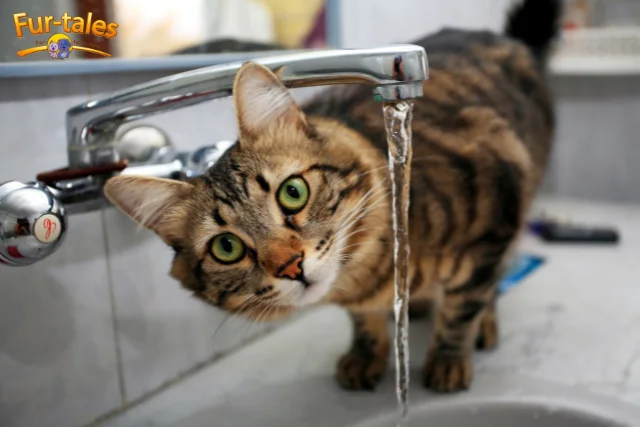
Why Do Cats Dislike Water? The Science Behind Feline Behavior
Cats are often seen as mysterious creatures, and one of the quirks that baffles many owners is their dislike of water. While some felines may dip a paw into a bowl or tolerate a bath, the majority avoid water like the plague. But why is that? Is it instinct, biology, or simply a matter of preference? To uncover the answer, we’ll explore feline behavior, history, and science to better understand this common trait.
The Historical Roots of Feline Behavior
Cats’ aversion to water has strong ties to their ancestry. Domestic cats descended from the African wildcat, a desert-dwelling species that rarely encountered large bodies of water. Unlike dogs, which were domesticated from wolves that often swam across rivers and streams, cats had no evolutionary need to adapt to swimming. This environmental factor shaped feline behavior over thousands of years, leaving them less comfortable with water compared to other animals. For cats, water simply wasn’t part of survival. They hunted small prey in dry environments, relied on minimal hydration, and evolved without the need to develop aquatic skills.
Biological Reasons Cats Dislike Water
Beyond history, biology plays a key role in shaping feline behavior around water. A cat’s coat, for example, isn’t built to handle being soaked. Unlike water-repellent fur found on some dog breeds, cat fur absorbs moisture quickly, becoming heavy and uncomfortable. This hampers their agility and makes them feel vulnerable to predators. Furthermore, wet fur takes a long time to dry, which can lower body temperature and cause stress. Cats are also highly sensitive to smells and textures. The scent of tap water, chlorine, or soaps used during baths may overwhelm their keen senses. Similarly, the strange texture of wet fur or the slick feeling of water on their skin can trigger discomfort, reinforcing their dislike.
The Role of Feline Behavior and Control
One of the most defining traits of feline behavior is the need for control over their environment. Cats like predictability and tend to avoid unfamiliar or uncontrollable experiences. Water often feels unpredictable: it moves unexpectedly, splashes when touched, and creates sensations they cannot fully control. This unpredictability challenges their sense of safety. Cats also spend a significant portion of their day grooming themselves. Their saliva spreads natural oils through their coat, keeping it clean and insulating. Being bathed interferes with this process, which may explain why cats prefer to handle hygiene on their own rather than rely on outside intervention.
Not All Cats Hate Water
Interestingly, not every cat avoids water. Certain breeds, such as the Turkish Van, Maine Coon, and Bengal, have been observed to tolerate or even enjoy swimming. This suggests that feline behavior regarding water isn’t universal but influenced by genetics, early socialization, and exposure. Kittens raised around water in a safe, positive way are often more open to it as adults. Likewise, individual personality plays a role—some curious cats may treat water as an extension of play, dipping paws into fountains or batting at dripping faucets.
How Owners Can Respect and Manage This Trait
For most cats, water avoidance is normal and nothing to worry about. As a cat owner, understanding feline behavior can help you manage situations where water becomes necessary, such as bathing for medical reasons or cleaning up messes. Here are some tips:
- Limit baths: Cats generally keep themselves clean, so only bathe them when truly needed.
- Use cat-safe wipes: These are useful alternatives to bathing for small messes.
- Introduce water slowly: If a bath is unavoidable, let your cat explore the tub before adding water.
- Keep the experience calm: Use a gentle voice, warm water, and a towel nearby to dry quickly.
- Reward and reassure: Offering treats and praise afterward reinforces positive associations.
The Fascination with Running Water
While most cats dislike being submerged, many are fascinated by running water. Feline behavior experts suggest that moving water seems fresher and safer to cats than stagnant water in a bowl. This instinct likely stems from wild ancestors, who avoided still water sources due to potential contamination. This explains why your cat might ignore their bowl but eagerly drink from a faucet or fountain.
The Science Behind Curiosity and Fear
Cats are naturally curious yet cautious animals. This duality in feline behavior explains why they might approach water with intrigue—dipping a paw in, watching ripples—but recoil when it splashes. Their brains are wired to explore new stimuli while also avoiding risks. To a cat, water is both interesting and threatening, which creates the classic push-pull relationship many owners witness.
FAQs About Cats and Water
Why do cats hate baths?
Cats dislike baths because wet fur feels heavy, uncomfortable, and takes a long time to dry. Baths also disrupt their natural grooming process.
Do cats ever need baths?
Most cats don’t need regular baths. However, long-haired breeds, senior cats, or those with medical conditions may require occasional help.
Why does my cat like drinking from the faucet?
Running water appeals to cats because it seems fresher and safer than standing water in a bowl.
Can you train a cat to like water?
While you may not make a cat love water, you can reduce fear through gradual exposure and positive reinforcement, especially if introduced during kittenhood.
Which cats enjoy water the most?
Breeds such as the Turkish Van, Maine Coon, Bengal, and Savannah are more likely to enjoy water compared to others.
Is it cruel to bathe a cat?
Not if done carefully and only when necessary. Using warm water, keeping sessions short, and offering comfort minimizes stress.
Image Source: Canva
